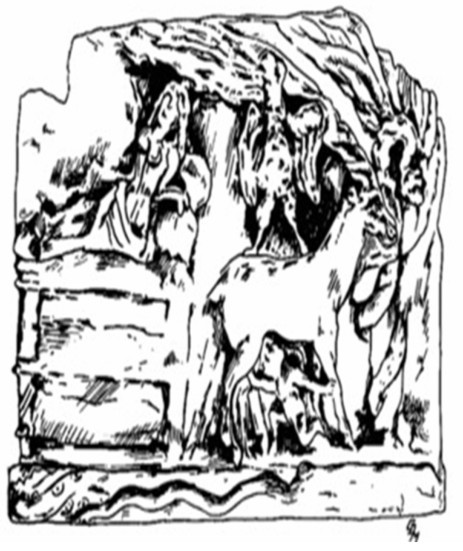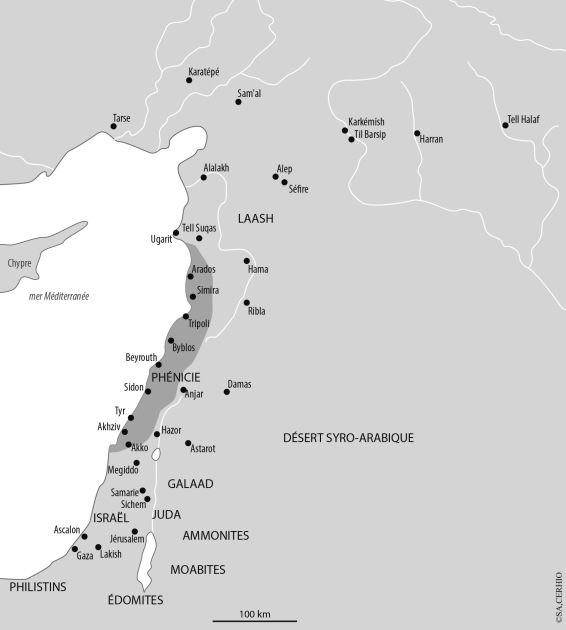Phoenician origins drowned in ancient Greek sources
The etymology of the word « phoinix »
is as yet unknown. Some hypotheses claim a Phoenician origin even though none of the legends actually hails from Phoenicia or establishes any link between the phoenix and the Phoenicians besides that suggested by the etymology. It would appear that the terms used by the Greek authors, namely « phoinix »
and its homonyms come from the adjective « phoinos »
meaning « red »
. The colour purple is at the root of its name, a king named Phoinix plays a leading role in this interpretative scheme. The term can take on several meanings according to context and grammatical use: the noun refers to the Tyrian purple[1], the date palm, the red-winged phoenix and a kind of cither invented by the Phoenicians whereas the adjective means « Phoenician »
. The word thus refers to a connection the Greeks had with Phoenicia and for some authors it relates specifically to the great Phoenician city of Tyre. « Phoinix »
thus appears as the transcription of a Semitic eponym on which the Greeks hung all that they considered specifically Phoenician: the alphabet, the musical instrument, seafaring expansion. However this hypothesis does not allow in any way for the phoenix as an extraordinary bird.
The connection between Tyre and the phoenix as a fabulous bird are attested in a text by Nonnus[2] who makes a connection between the God Melqart[3] and this winged creature. He writes that the Phoenix, bearing the end of a life and the naturally fecund beginning of another life, throws itself in the fire and sheds its senescence before being reborn. According to this text, the image of the phoenix as a sun symbol, resuscitated by fire can be an allusion to the pyre where Melqart himself supposedly underwent that same fate of death and resurrection. But the hypothesis of such an identification of Melqart with the phoenix is not that readily sustained, especially given that no Phoenician text reporting the myth of Melqart or of this bird has been discovered to date.
Archaeological remains found in Tyre do not provide any clear information concerning the legend of the phoenix a few findings wherein birds have a role notwithstanding. Among those findings, a small Greco-Roman relief is worth a mention: it is a votive plate showing on the right a tree on fire with a snake coiled around its flame-girdled trunk. Beside it, a small child kneeling between the legs of a beast that may be a doe according to archaeologist Ernest Will, turns its head towards its udder, in keeping with the well rehearsed theme of the « godly »
or « heroic »
child nursed by an animal mother. To the left a woman lay on a bed resting her left arm on a pile of cushions. A powerful eagle shown frontally, its wings half-spread seems perched on the doe's back. Nothing in the scrutiny of this relief allows as yet an identification of this eagle with the phoenix. We must wait for further digs to cast more light on this representation.








